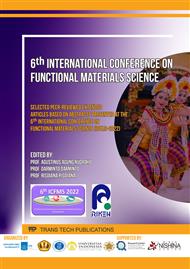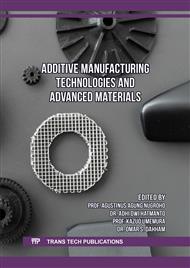p.71
p.77
p.85
p.93
p.101
p.109
p.123
p.131
p.139
Investigation of Dependence of Magnetic Properties on Sintering Temperature of Eu1.85Ce0.15CuO4+α-δ Prepared by Sol-Gel Method
Abstract:
Differences in particle size can affect the magnetic properties of superconductors. At the nanoscale, superconductors have different magnetic properties than those at the micro or submicron size. The difference in particle size in superconducting materials can be obtained by giving the sintering temperature difference. In this work, we focus only on the magnetic properties in Eu1.85Ce0.15CuO4+α-δ (ECCO) in the optimal-doped regime prepared by the sol-gel method with various sintering temperatures 700 °C, 800 °C and 900 ° C sizes with an annealing temperature 800 °C to obtain different particle. The lattice parameters and crystallite size were obtained using XRD. Based on the XRD results, the higher the sintering temperature variation, the larger the crystallite size produced with lattice distortion and expansion with a decrease in particle size. The magnetic properties of these materials have been investigated using a superconducting quantum interference device (SQUID) at temperatures between 2 K and 30 K with the applied field at 5 Oe. Based on the SQUID measurement, the magnetic properties of samples sintering at 700 °C and 800 °C were found to be ferromagnetic-like behaviour, while sintering at 900 °C was found to be paramagnetic with no trace of the superconductivity phase. The differences response of magnetic properties can be associated with the effect of the differences size of the crystallites in each material, that can relate to uncompensated spins produced by the surface effect.
Info:
Periodical:
Pages:
101-106
Citation:
Online since:
July 2023
Keywords:
Price:
Сopyright:
© 2023 Trans Tech Publications Ltd. All Rights Reserved
Share:
Citation:



